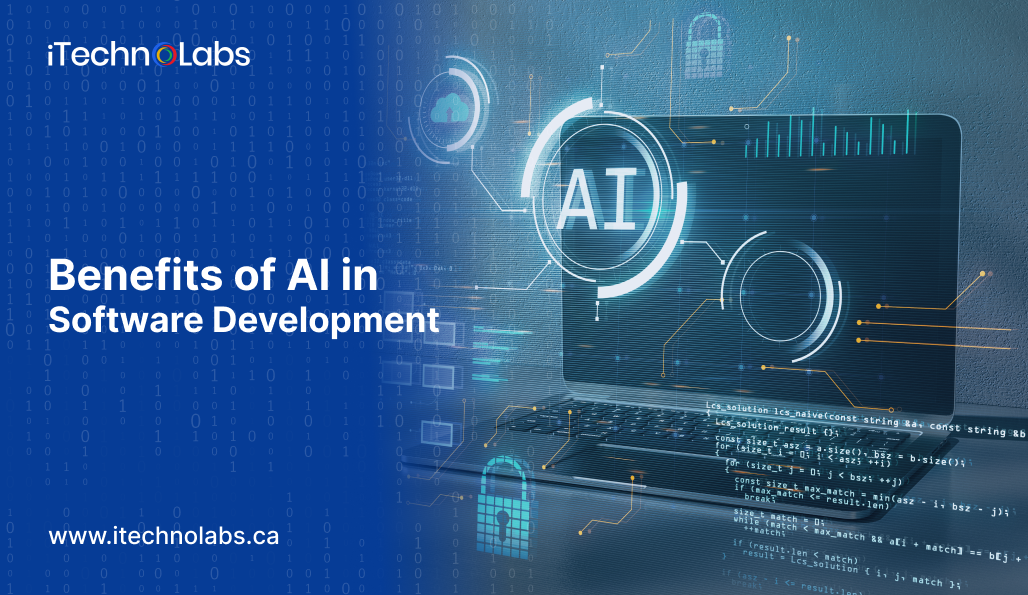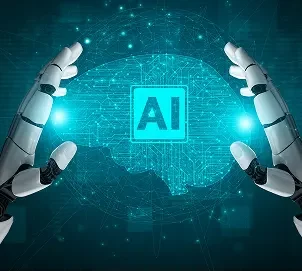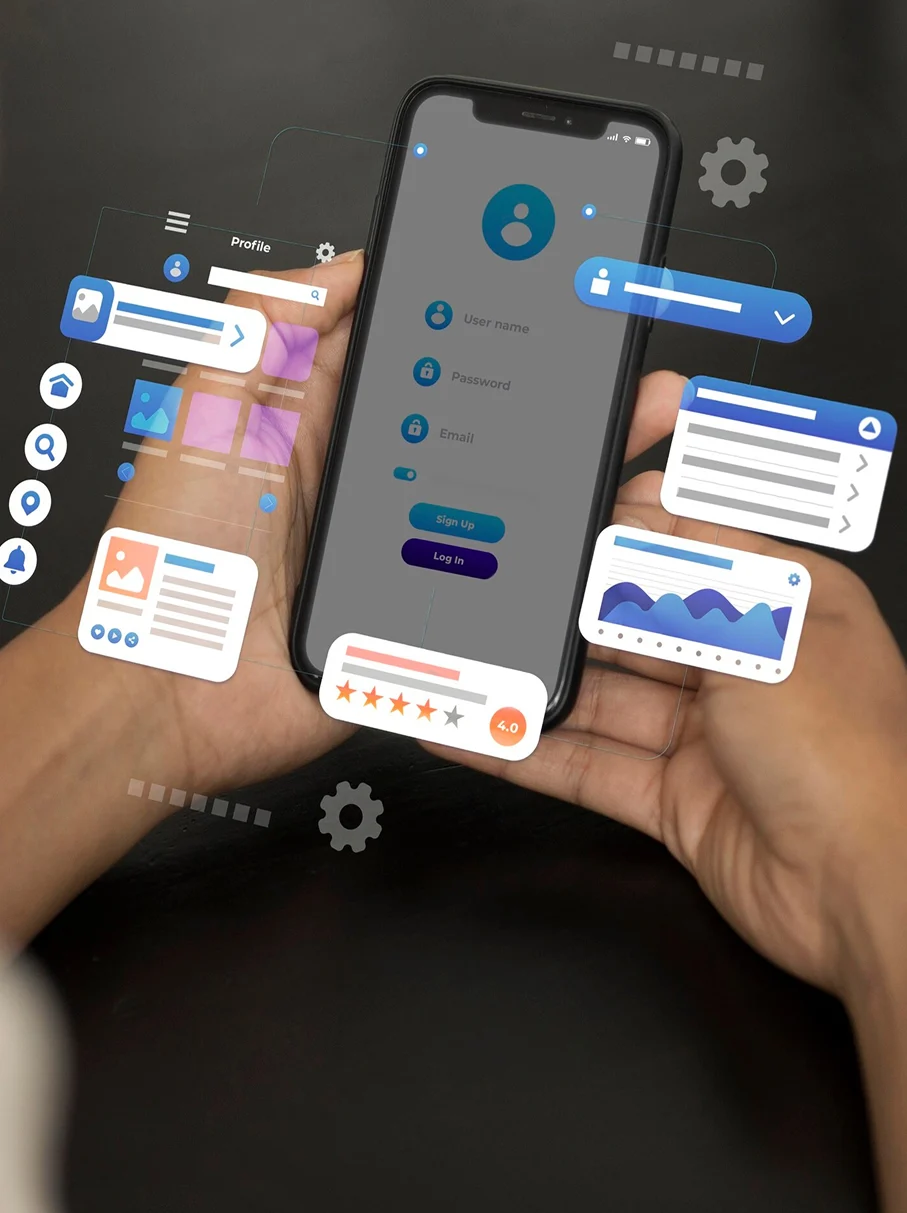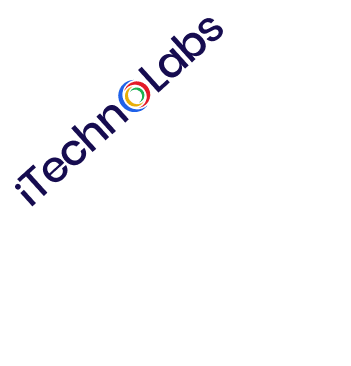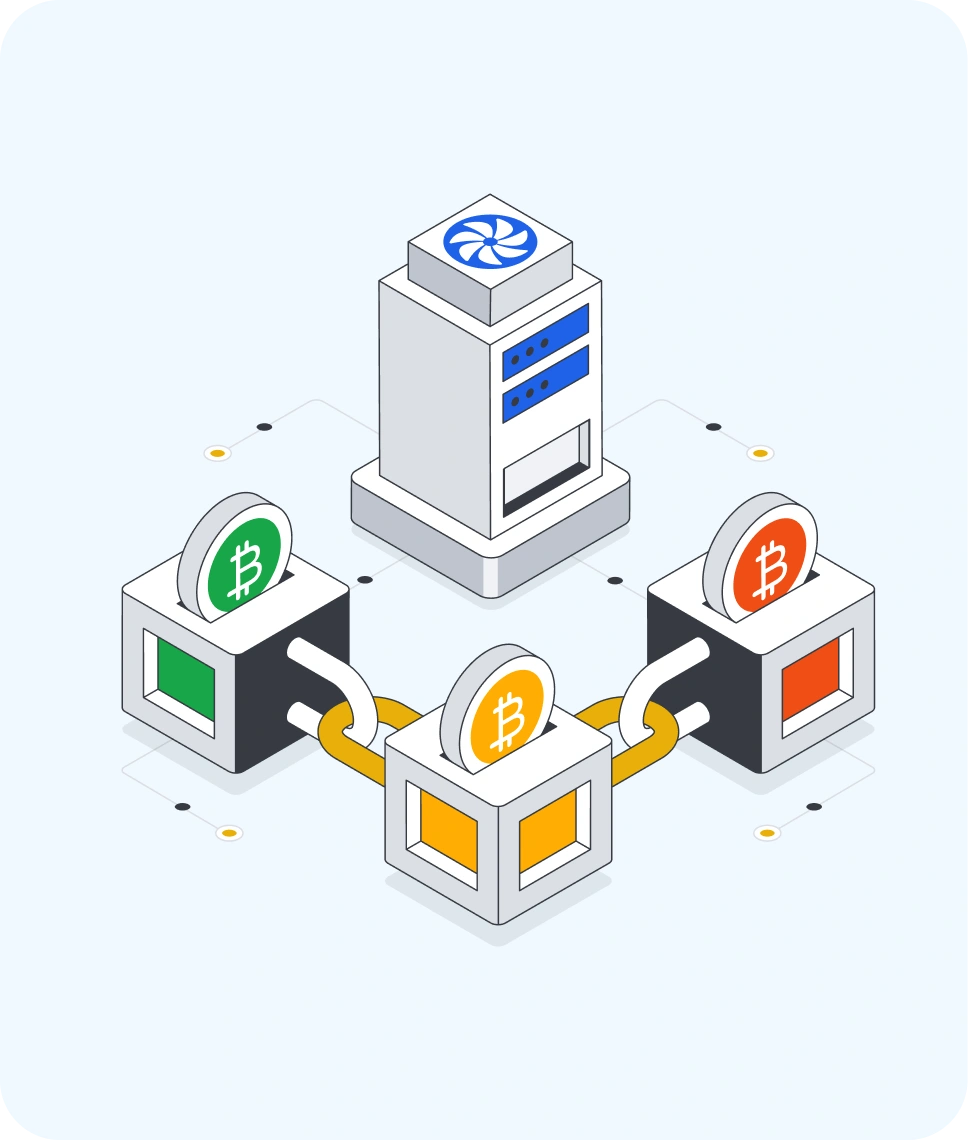Artificial Intelligence (AI) has transformed industries worldwide, and software development is ahead of this change. Software increases modern AI productivity in design and improves accuracy, and the entire software development accelerates the distribution in the life cycle. By automating repeated coding, they move on before detecting errors and providing real-time guidance; the AI teams help focus on innovation instead of regular tasks.
From future analyses that identify the project, a machine learning model, which identifies the weak code, risks AI equipped with action-based insights to the developers that the traditional methods cannot match. Automatic testing, intelligent code assessments, and dynamic resource allocation reduce technical loans, cut delays and strengthen the general software quality. Agile and DevOps exercises get an adaptive, date-driven team, which enables rapid liberation without waiving stability or safety.
Organizations that use AI-controlled development benefit from better project schemes, customised cloud expenses and improved collaboration in distributed teams. In the real-time dashboard, semantic search and relevant assistance strengthened workflows and protected compliance and sensitive data.
This blog examines the benefits of AI in software development and shows how the integration of smart tools in planning, coding, testing and finance helps companies do smart work, create flexible applications and provide high-performance software solutions that meet user requirements and competitive market prints.
Why AI Matters in Modern Development
Software runs on the infrastructure distributed from unbroken, complicated, skyland systems. Agile and DevOps improved speed, yet limited procedures continue to limit scalability. AI adds an adaptive, date-driven team that is able to learn from previous projects, analyses the dataset on a large scale and completes tasks at the association level that cannot match people.
When we find out the benefits of AI in software development, we check the benefits of productivity, quality, safety and innovation. Organisations that embrace AI are no longer bound by linear workflows; they move towards intelligent, self-reliant pipelines.
Top Benefits of AI in Software Development
AI organises the life cycle of software by automatic coding, detecting errors, and improving project planning. Wise tools accelerate testing, adapt to construction and supervise developers with suggestions in real-time, and reduce errors and technical debt. The team is released quickly, the quality of the code increases, cost cuts and RIT are strengthened by promoting collaboration and innovation, which helps to provide companies with stable, high-performing software that meets user needs and is quickly adapted to changing market requirements.
Enhanced Code Quality & Error Reduction
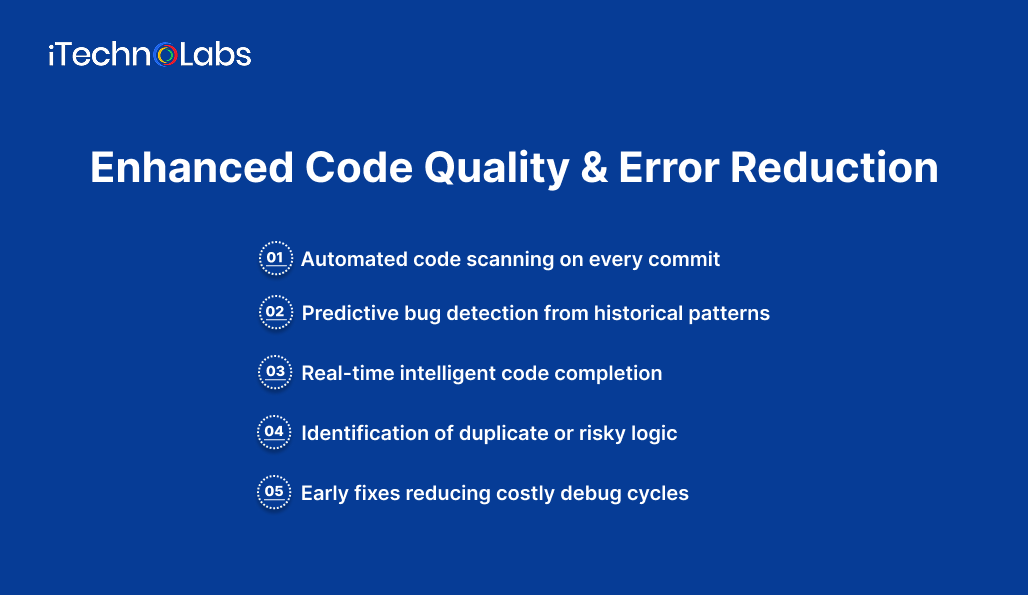
AI improves software stability by catching mistakes before they escalate. It analyses pull requests, predicts risk-prone code, and suggests best practices as you type. With consistent review and data-driven guidance, developers avoid common pitfalls, reduce technical debt, and deliver cleaner, more maintainable software with fewer production bugs.
- Automated code scanning on every commit
- Predictive bug detection from historical patterns
- Real-time intelligent code completion
- Identification of duplicate or risky logic
- Early fixes reducing costly debug cycles
Accelerated Development Speed
Meeting tight deadlines is easier when repetitive work disappears. AI generates boilerplate, streamlines testing, and optimises build pipelines, cutting days into hours. Teams can push prototypes, minimum viable products, and feature updates faster while maintaining quality, giving businesses a decisive advantage in competitive markets.
- Natural-language prompts create instant code blocks
- Smart refactoring modernizes legacy systems
- Rapid regression testing executes automatically
- Optimized build orchestration shortens compile times
- Faster releases enable agile iteration
Improved Project Planning & Estimation
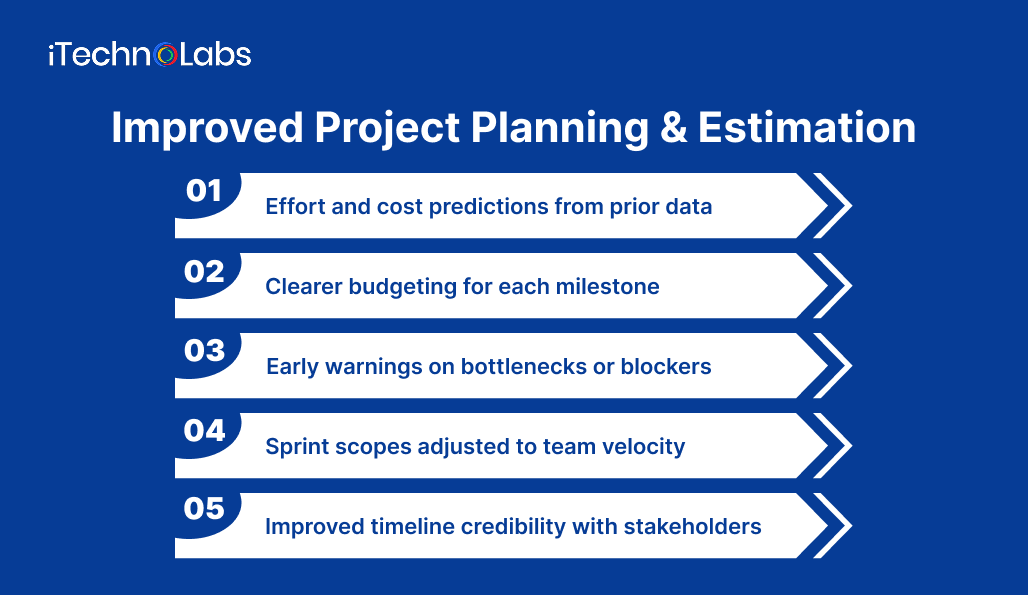
Accurate forecasts save projects from delays and overruns. AI studies historical performance, team velocity, and complexity to provide evidence-based estimates. By predicting risks and aligning sprints realistically, managers can allocate resources effectively, avoid surprises, and maintain stakeholder confidence through transparent, data-driven planning.
- Effort and cost predictions from prior data
- Clearer budgeting for each milestone
- Early warnings on bottlenecks or blockers
- Sprint scopes adjusted to team velocity
- Improved timeline credibility with stakeholders
Intelligent Automation Across the Life Cycle
Automation isn’t new, but AI makes it adaptive. Natural language processing translates requirements into specs, predictive algorithms schedule builds, and smart deployment tools scale resources on demand. Engineers spend less time repeating chores and more time solving complex problems, boosting morale and throughput simultaneously.
- User stories converted into testable specs
- Optimal build order for faster compilation
- Self-tuning deployment strategies
- Automatic workflow orchestration
- Greater developer focus on core logic
Smarter Testing & Quality Assurance
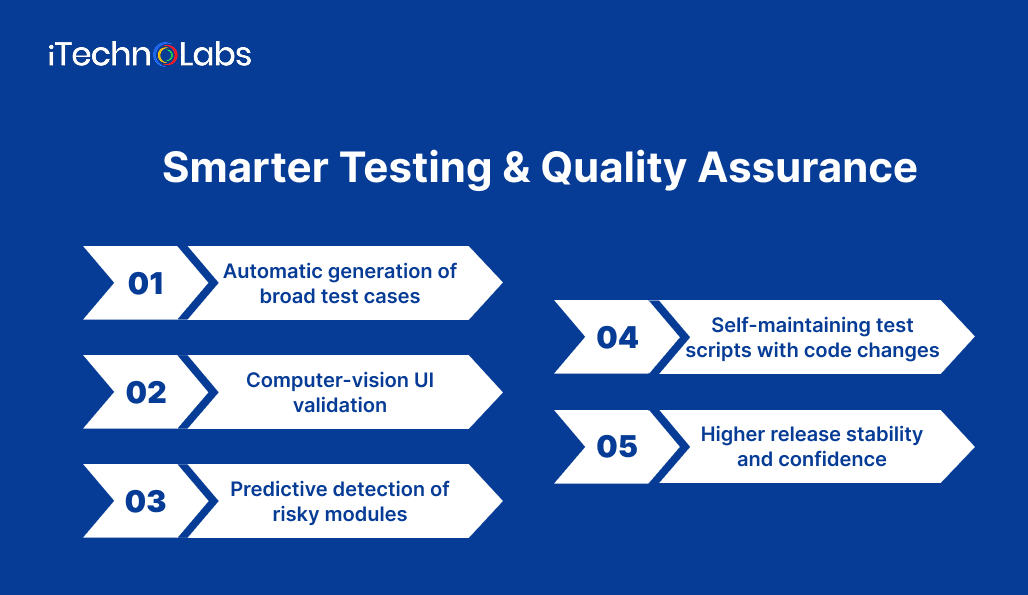
Quality assurance often consumes half the schedule; AI slashes that. Learning algorithms design meaningful tests, validate interfaces visually, and predict defects based on code history. Continuous self-updating suites mean broader coverage, fewer regressions, and a smoother user experience post-release.
- Automatic generation of broad test cases
- Computer-vision UI validation
- Predictive detection of risky modules
- Self-maintaining test scripts with code changes
- Higher release stability and confidence
Personalized Developer Assistance
AI acts like an instant mentor, reducing learning curves and repetitive lookups. From suggesting context-relevant code to condensing documentation, it accelerates decision-making and empowers junior and senior engineers alike. Teams ramp up faster, write cleaner logic, and maintain productivity across varying experience levels.
- Context-aware snippet and library tips
- Concise summaries of complex docs
- Inline explanations of logic flow
- Quick orientation for new team members
- Consistent skill support across the team
Data-Driven Decision Making
Modern development creates oceans of data: commits, builds, and telemetry. AI turns this into insight by spotting trends, detecting anomalies, and predicting outages before they occur. Choices are grounded in metrics, aligning engineering moves with business strategy instead of guesswork.
- Pattern recognition across sprints
- Anomaly alerts on unusual regressions
- Predictive analytics for capacity issues
- Actionable dashboards of key KPIs
- Evidence-based strategy over intuition
Cost Optimization & Efficiency
Smarter processes save money at every stage. AI reduces rework, adjusts cloud resources dynamically, and directs talent toward high-value tasks. The result is a leaner, more efficient operation where investments yield measurable returns rather than being consumed by avoidable waste.
- Bugs caught early lower patch expenses
- Cloud compute scaled only when needed
- Spending forecasts matched to demand
- Developers freed from repetitive chores
- Higher ROI through streamlined workflows
Strengthened Security & Compliance
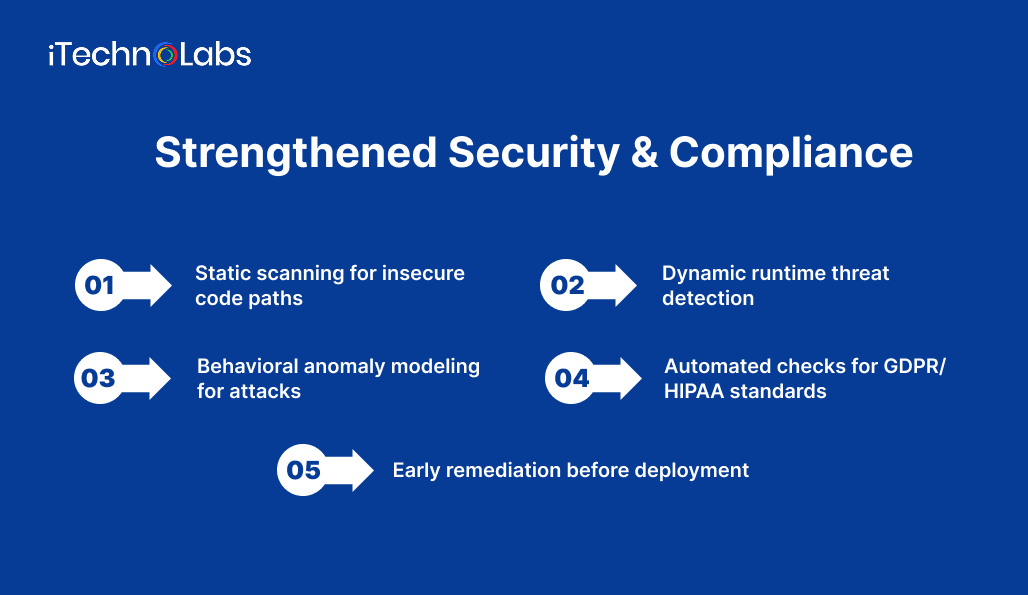
Security is strongest when embedded early. AI scans code, monitors runtime anomalies, and enforces policy automatically. Threats are flagged instantly, compliance gaps close sooner, and releases hit production with fewer vulnerabilities, keeping users and regulators satisfied.
- Static scanning for insecure code paths
- Dynamic runtime threat detection
- Behavioral anomaly modeling for attacks
- Automated checks for GDPR/HIPAA standards
- Early remediation before deployment
Collaboration & Knowledge Flow
Distributed teams need seamless information sharing. AI organizes repositories, labels reusable modules, and turns meeting chatter into action items. Semantic search across docs and APIs eliminates hunting, helping everyone stay focused and aligned across geographies.
- Automatic tagging of reusable assets
- Instant semantic search of code and docs
- Meeting transcripts condensed to decisions
- Auto-updates for boards and backlogs
- Less duplicated effort, smoother teamwork
Innovation & Experimentation
By removing repetitive overhead, AI leaves developers room to create. Rapid prototypes, architecture insights, and feature prioritization informed by real-world feedback encourage experimentation. Teams fail fast, learn quickly, and deliver features users actually want—without jeopardizing core stability.
- Quick generation of proof-of-concept builds
- Architecture tuning for scalability
- Priorities shaped by user behavior trends
- Low-cost testing of bold ideas
- Continuous improvement culture
Real-World Tools & Examples
AI is already mainstream in development. Popular platforms show how intelligence embeds into everyday workflows, reducing friction and boosting accuracy. Teams using these tools see immediate gains in speed, code health, and security posture.
- GitHub Copilot for predictive code writing
- Snyk Code for vulnerability spotting
- Atlassian Intelligence for agile analytics
- DeepSource for automated reviews
- Harness AI for CI/CD optimization
Challenges & Responsible Adoption
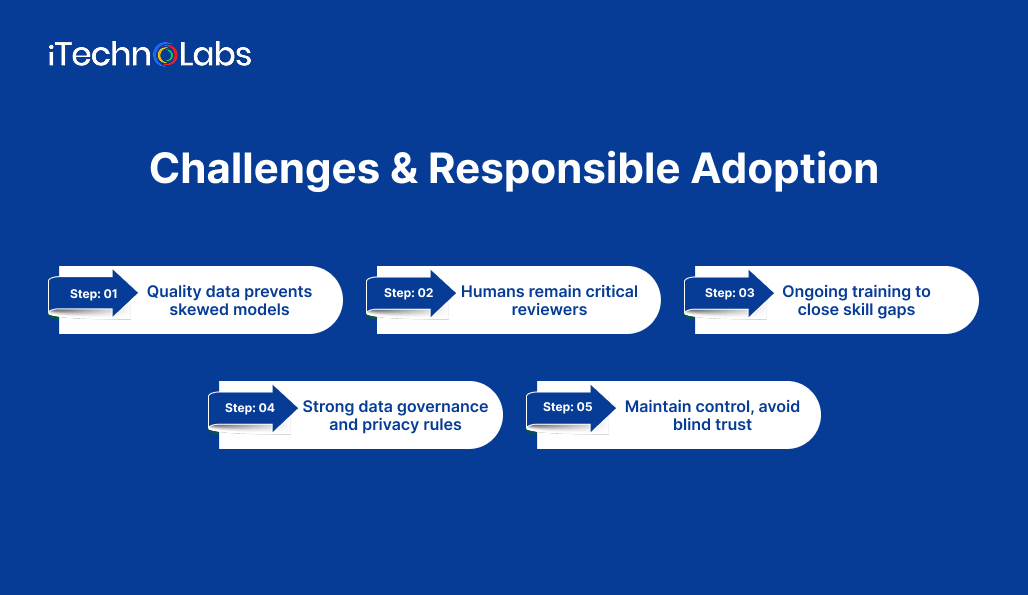
AI is powerful but not infallible. Teams must guard against bias, over-reliance, and privacy lapses. Success comes from balanced adoption: blending automation with oversight, ensuring skill growth, and respecting ethical and legal boundaries.
- Quality data prevents skewed models
- Humans remain critical reviewers
- Ongoing training to close skill gaps
- Strong data governance and privacy rules
- Maintain control, avoid blind trust
Future of AI-Driven Development
Tomorrow’s software will co-evolve with its tools. Expect self-healing applications, automatically designed architectures, and natural-language interfaces that build entire stacks. Human creativity and machine precision will merge, transforming engineering into a collaborative partnership.
- Code that detects and repairs itself
- Machine-generated service architectures
- Natural-language development workflows
- Predictive infrastructure scaling
- Shared innovation between humans and AI
Important Article: AI App Development in 2025: A Complete Guide for Businesses
Conclusion
Artificial intelligence software changes engineering subjects from the ground. AI Beyond each layer of the stack, it shortens the AI deadline, improves the quality, strengthens the safety and cuts unnecessary costs. Repeated tasks such as coding of boilerplate, regression testing, and manual code assessments are automatic, so the teams can focus on high-value design designs. Predictive analyses detect errors, display risk and compliance intervals before reaching production, and secure cleaner liberation and low emergency patches.
Beyond technical efficiency, AI developers give the right to think greatly. Free For common tasks, engineers can experiment, refine architecture, and distribute features that actually improve the user experience. Estimate the smart project, make evidence-based decisions, and adapt resource scaling of support organizations on plan and budget, even in the complex multilayer environment. Security and privacy safety is first built, which makes stakeholders believe that both are strong and obedient.
Organisations that integrate benefits of AI in software development today form a basis for sustainable innovation in a responsible manner. Balance control, human monitoring, and continuous learning ensure automation so that human competence does not get a place. When the workflakes become intelligent quickly, the future will be a collaboration where human creativity and the machine’s accurate work quickly, smart and more flexibly work together to shape.
FAQ
1. How does the AI software quality improve?
AI scans the code continuously, detects risky arguments and suggests improvement before the production of errors. Predictive algorithms learn from previous insects, use best practices and highlight real -time weaknesses. This active approach reduces technical debt, stabilizing release and ensures only maintenanceable, cleaner software without relying on manual reviews.
2. Can AI actually provide speed to the deadline for development?
Yes. AI ends repetitive work such as coding of boilerplate, regression tests and orchestration construction. The natural language signal produces immediate code, while the smart refractor updates the league system. By automating tasks and prioritizing care problems, team prototypes and releases quickly, achieve close repetition and focus on innovative functions instead of functioning regularly.
3. What role does AI play in the project plan?
AI analyzes the complexity of historical sprint data, team speeds and forecasts of time limit and costs. It exposes potential obstacles, adjusts the extent dynamic and guides the resource allocation. Leaders receive a reliable plan, reduce overrik and make evidence-based decisions, and get stakeholders to make the obligations and teams to work within realistic, data-driven parameters.
4. Is AI software useful for safety and compliance?
Absolutely. AI-static code scanning, surveillance of runtime anomalies, and unusual behavioral models that may indicate attacks. It uses automatic compliance rules, passes the flag quickly, and suggests treatment. Integration of AI into the pipeline strengthens the Armed Forces, reduces weaknesses, and helps the teams meet the standards, such as GDPR or HIPAA, effectively.
5. Will AI replace human developers?
AI complements rather than replaces engineers. Machines handle repetitive tasks, analyze vast data, and surface insights instantly, but human creativity, problem-solving, and ethical judgment remain vital. Developers shift toward design, innovation, and oversight while AI augments productivity, enabling teams to build smarter software faster without diminishing human expertise.

